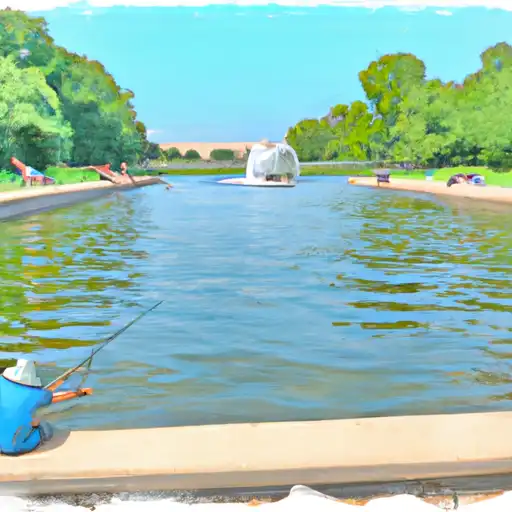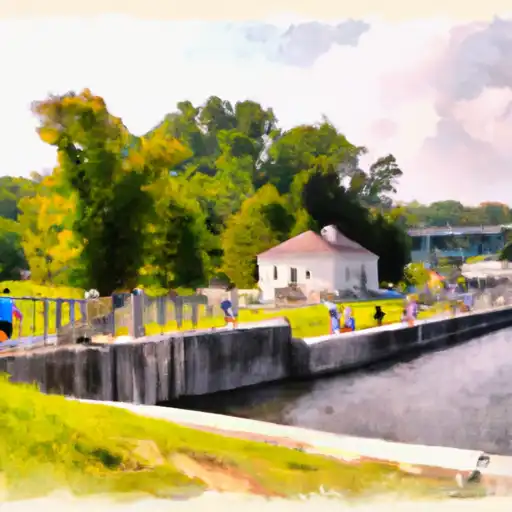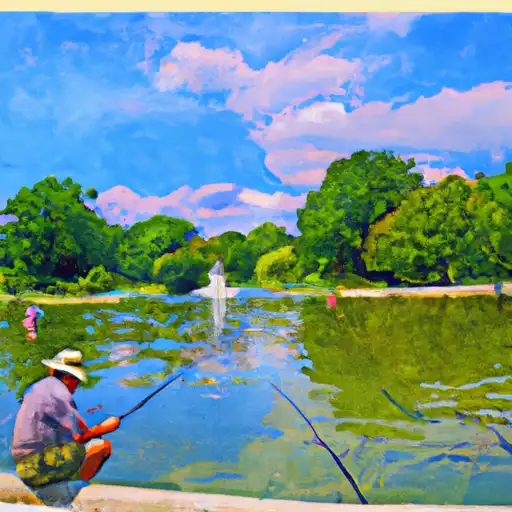World War Ii Memorial
Rate this placeLast Updated: January 18, 2026
The World War II Memorial in the District of Columbia is a significant landmark commemorating the sacrifices and achievements of Americans during World War II.
°F
°F
mph
Wind
%
Humidity
Summary
It is a popular destination for visitors due to its historical importance and notable design. Here is a summary of the memorial, including reasons to visit, specific points of interest, interesting facts, and the best time of year to plan a visit.
Reasons to Visit:
1. Historical Significance: The World War II Memorial honors the 16 million Americans who served in the armed forces during World War II, as well as the over 400,000 who made the ultimate sacrifice.
2. Stunning Design: The memorial's architecture, designed by Friedrich St. Florian, features a central plaza with a large fountain surrounded by 56 granite pillars, representing the states, territories, and districts involved in the war.
3. Reflective Atmosphere: The memorial's serene setting provides visitors with an opportunity for reflection and remembrance, allowing them to pay tribute to the bravery and sacrifices made by previous generations.
Points of Interest:
1. Freedom Wall: The memorial's centerpiece is the Freedom Wall, adorned with 4,048 gold stars, each representing 100 American military personnel who died or remain missing during the war.
2. Pacific and Atlantic Pavilions: Located at the ends of the memorial, these pavilions depict the major theaters of the war and display prominent quotes and bronze reliefs of significant events.
3. Kilroy Was Here: Look for the engraving "Kilroy Was Here" on the memorial's southern entrance arch. It pays tribute to the famous graffiti symbol that became a morale-boosting character for American troops during the war.
Interesting Facts:
1. Dedication: The World War II Memorial was dedicated on May 29, 2004, by President George W. Bush and attended by surviving veterans of the war.
2. Symbolic Design: The memorial's design elements, such as the water elements representing the Atlantic and Pacific oceans, symbolize the global scale of the conflict.
3. Construction Challenges: The memorial's construction faced controversy and challenges due to its location on the National Mall and required extensive engineering to address potential water table issues.
Best Time to Visit:
The World War II Memorial can be visited year-round, but the best time to plan a visit is during the spring (March to May) and fall (September to November) seasons. The weather is generally pleasant, and the memorial is less crowded compared to summer, allowing for a more immersive experience. It is advisable to check the official National Park Service website for any possible closures or restrictions during your planned visit.
Please note that while efforts have been made to ensure accuracy, it is always recommended to verify information from multiple independent sources for the most up-to-date and accurate details about the World War II Memorial in the District of Columbia.
Weather Forecast
Park & Land Designation Reference
Large protected natural areas managed by the federal government to preserve significant landscapes, ecosystems, and cultural resources; recreation is allowed but conservation is the priority.
State Park
Public natural or recreational areas managed by a state government, typically smaller than national parks and focused on regional natural features, recreation, and education.
Local Park
Community-level parks managed by cities or counties, emphasizing recreation, playgrounds, sports, and green space close to populated areas.
Wilderness Area
The highest level of land protection in the U.S.; designated areas where nature is left essentially untouched, with no roads, structures, or motorized access permitted.
National Recreation Area
Areas set aside primarily for outdoor recreation (boating, hiking, fishing), often around reservoirs, rivers, or scenic landscapes; may allow more development.
National Conservation Area (BLM)
BLM-managed areas with special ecological, cultural, or scientific value; more protection than typical BLM land but less strict than Wilderness Areas.
State Forest
State-managed forests focused on habitat, watershed, recreation, and sustainable timber harvest.
National Forest
Federally managed lands focused on multiple use—recreation, wildlife habitat, watershed protection, and resource extraction (like timber)—unlike the stricter protections of national parks.
Wilderness
A protected area set aside to conserve specific resources—such as wildlife, habitats, or scientific features—with regulations varying widely depending on the managing agency and purpose.
Bureau of Land Management (BLM) Land
Vast federal lands managed for mixed use—recreation, grazing, mining, conservation—with fewer restrictions than national parks or forests.
Related References
Area Campgrounds
| Location | Reservations | Toilets |
|---|---|---|
 Camp Loop D
Camp Loop D
|
||
 Camp Loop C
Camp Loop C
|
||
 Camp Loop B
Camp Loop B
|
||
 Camp Loop A
Camp Loop A
|
||
 Greenbelt Park
Greenbelt Park
|
||
 Andrews AFB Military
Andrews AFB Military
|

 Martin Luther King Jr. Memorial
Martin Luther King Jr. Memorial
 Korean War Veterans Memorial
Korean War Veterans Memorial
 Franklin Delano Roosevelt Memorial
Franklin Delano Roosevelt Memorial
 Vietnam Veterans Memorial
Vietnam Veterans Memorial
 Constitution Gardens
Constitution Gardens
 Reflecting Pool
Reflecting Pool
 Lock House
Lock House
 Constitutional Gardens Pond
Constitutional Gardens Pond
 Boundary Channel
Boundary Channel
 Rock Creek
Rock Creek